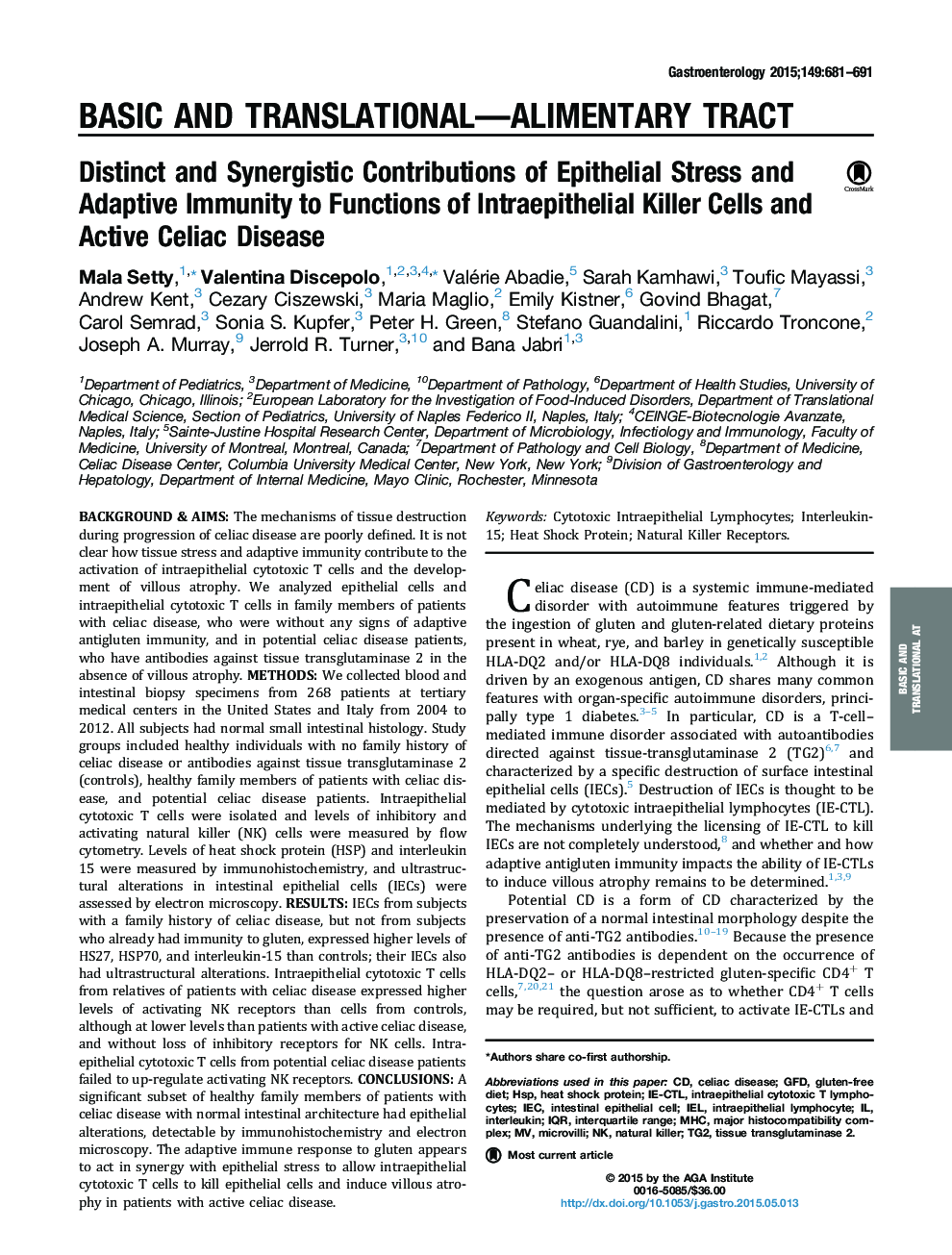| کد مقاله | کد نشریه | سال انتشار | مقاله انگلیسی | نسخه تمام متن |
|---|---|---|---|---|
| 6092707 | 1209780 | 2015 | 21 صفحه PDF | دانلود رایگان |

Background & AimsThe mechanisms of tissue destruction during progression of celiac disease are poorly defined. It is not clear how tissue stress and adaptive immunity contribute to the activation of intraepithelial cytotoxic T cells and the development of villous atrophy. We analyzed epithelial cells and intraepithelial cytotoxic T cells in family members of patients with celiac disease, who were without any signs of adaptive antigluten immunity, and in potential celiac disease patients, who have antibodies against tissue transglutaminase 2 in the absence of villous atrophy.MethodsWe collected blood and intestinal biopsy specimens from 268 patients at tertiary medical centers in the United States and Italy from 2004 to 2012. All subjects had normal small intestinal histology. Study groups included healthy individuals with no family history of celiac disease or antibodies against tissue transglutaminase 2 (controls), healthy family members of patients with celiac disease, and potential celiac disease patients. Intraepithelial cytotoxic T cells were isolated and levels of inhibitory and activating natural killer (NK) cells were measured by flow cytometry. Levels of heat shock protein (HSP) and interleukin 15 were measured by immunohistochemistry, and ultrastructural alterations in intestinal epithelial cells (IECs) were assessed by electron microscopy.ResultsIECs from subjects with a family history of celiac disease, but not from subjects who already had immunity to gluten, expressed higher levels of HS27, HSP70, and interleukin-15 than controls; their IECs also had ultrastructural alterations. Intraepithelial cytotoxic T cells from relatives of patients with celiac disease expressed higher levels of activating NK receptors than cells from controls, although at lower levels than patients with active celiac disease, and without loss of inhibitory receptors for NK cells. Intraepithelial cytotoxic T cells from potential celiac disease patients failed to up-regulate activating NK receptors.ConclusionsA significant subset of healthy family members of patients with celiac disease with normal intestinal architecture had epithelial alterations, detectable by immunohistochemistry and electron microscopy. The adaptive immune response to gluten appears to act in synergy with epithelial stress to allow intraepithelial cytotoxic T cells to kill epithelial cells and induce villous atrophy in patients with active celiac disease.
Journal: Gastroenterology - Volume 149, Issue 3, September 2015, Pages 681-691.e10